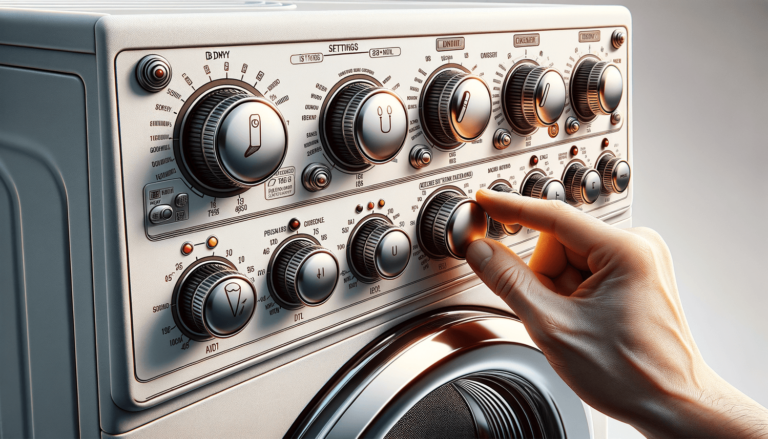

Modern laundry appliances have saved us time and energy by simplifying the drying process, and Panda dryers are no exception. In this blog post, we’re going to explore and demystify the extensive variety of Panda Dryer Settings available to enhance your laundry experience. We’ll cover the different cycles, temperatures, and additional features to help you make the most out of your Panda dryer, ensuring your garments are always fresh and wrinkle-free. So, let’s dive into these Panda Dryer
The Panda dryer has a variety of options to cater to different drying needs, with distinct cycles, modes, and types. We’ll break down the essential details for each setting below.
These settings are divided into three main categories based on the temperature and type of clothing.
In addition to the essential drying cycles, Panda dryers also offer specialized features that increase efficiency and clothing care.
Panda dryers offer customizable dryness levels depending on your preferences and clothing type.
Equipped with built-in sensors and indicators to make the drying process more convenient and efficient.
As a blog about technology settings, Settings King is here to help you get the most out of your Panda dryer. We’ve compiled a few expert tips to maximize the effectiveness of your dryer settings.
If you’re in a hurry and need your clothes dried quickly, opt for the Timed Dry setting at a higher heat setting like Normal or Heavy Duty if the fabric allows. Remember not to overload the dryer; a smaller, loosely packed load will dry faster.
To minimize wrinkles, utilize the Permanent Press cycle for synthetic and combined fabrics, and after the drying cycle ends, turn on the Wrinkle Guard setting. Remember to remove clothes promptly once the cycle finishes to prevent any new wrinkles from forming.
For optimal softness and fabric fluffiness, use the Damp Dry setting and remove items while still slightly damp. Air-dry your garments for a few minutes, and fluffier fabrics like towels will feel plush and absorbent.
To conserve energy and be eco-friendly, avoid over-drying your clothes. Make use of the Moisture Sensor feature – it will adjust the cycle duration based on the moisture level, ensuring efficient energy use. Keep the lint filter clean and consider the Air Dry cycle when suitable, as it doesn’t consume any heat energy.
Proper maintenance is vital to ensure that your Panda dryer operates optimally. As experts at Settings King, we recommend clearing the lint filter after every cycle – a clean lint filter significantly improves drying efficiency and reduces energy consumption. Perform a more thorough cleaning of the filter and vent duct at least every six months to avoid fire hazards. Regular checks on the moisture sensors are also essential to ensuring accurate drying.
Keep in mind that while we’ve done our best to provide optimal settings for your Panda dryer, individual preferences and clothing materials may differ. Feel free to experiment with the different dryer settings to find what works best for you. Some users may find that using lower heat settings and allowing for longer drying times create better results for specific garments, while others may discover that a combination of settings suits their needs best.
Here at Settings King, we pride ourselves on guiding readers through various technology settings. We believe Panda dryers are excellent appliances that provide users with flexibility and control over their drying experience, making them a popular choice for many households.
If you’re looking to enhance your laundry routine with other advanced appliances, be sure to check out our blog for more in-depth, easy-to-follow guides that help you get the most out of your devices. With our expert advice on various technology settings, we make sure you always have full control over your gadgets.
We’ve gathered some common questions and answers related to Panda dryer settings to help make your laundry experience smoother. If you have any further questions or concerns, feel free to consult your dryer’s user manual or the manufacturer’s website for additional assistance.
It’s essential not to overload your dryer, as it may decrease its efficiency and extend drying times. For optimal results, fill the dryer drum to about half or two-thirds capacity. This allows sufficient space for the clothes to tumble freely and dry evenly.
Yes, you can use fabric softener sheets in your Panda dryer. Follow the instructions on the softener sheet packaging and place the sheet in the drum with your clothes to help reduce static and soften the fabrics.
To avoid shrinkage, it’s crucial to follow the care labels on your garments. Typically, using lower heat settings and removing clothes when they’re slightly damp can help minimize shrinkage. For delicate items, consider air-drying or laying them flat to dry instead.
If your clothes remain damp after a cycle, it could be due to various factors such as an overloaded drum, a clogged lint filter, or incorrect dryer settings. Ensure you’re using the right settings for your clothes, clean the lint filter, and avoid overloading the dryer for better results.
If your Panda dryer isn’t producing heat, first ensure that the dryer settings are correct. If the issue persists, unplug the dryer and check for a tripped circuit breaker, a blown fuse, or a damaged power outlet. If you’re still experiencing problems, consult the user manual for troubleshooting tips or contact the manufacturer for further assistance.